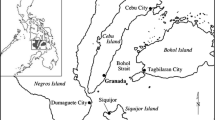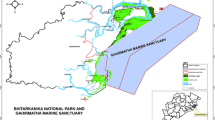Abstract
This article explores responses to the implementation of Russian sturgeon conservation policy in three fishing communities (in Dagestan, Kalmykia and the Volga River delta areas), along the Western and Northern coasts of the Caspian Sea. Enforcement of regulatory measures has led to complex socio-cultural responses. We show how social responses to conservation policy generate various forms of poaching. An analytical model of ‘soft’ and ‘hard’ forms of poaching is analyzed against three regulatory measures: introduction of specially designated fishing areas in Russia’s Caspian fisheries, border zone expansion and the ban on sturgeon fishing. We explain why in Kalmykia the policy led people to stop practicing hard forms of sturgeon fishing, while fishermen in Dagestan responded in a more complex manner by displaying resistance towards the new policies.

Similar content being viewed by others
References
Bardach E, Kagan RA (1982) Going by the book: the problem of regulatory unreasonableness. Temple University Press, Philadelphia
Bell S, Hampshire K, Topalidou S (2007) The political culture of poaching: a case study from northern Greece. Biodivers Conserv 16:399–418
Berkes F (1986) Local-level management and the commons problem: a comparative study of Turkish coastal fisheries. Mar Policy 10:215–229
Beyers RL, Hart JA, Sinclair ARE, Grossmann F, Klinkenberg B et al (2011) Resource wars and conflict ivory: the impact of civil conflict on elephants in the Democratic Republic of Congo-the case of the Okapi Reserve. PLoS One 6(11):e27129. doi:10.1371/journal.pone.0027129
Bobyrev AE, Burmensky VF, Kriksunov EA, Shatunovskii MI (2009) Biotic community of the Northern Caspian Sea: problems of biological resources management. Biol Bull 129(6):589–609
Bulte EH, Horan RD (2002) Does human population growth increase wildlife harvesting? An economic assessment. J Wildl Manag 66(3):574–580
Davydov V (2014) Fishery in ‘free spaces’: non-compliance with fishery regulations in a northern Baikal Evenki village. Polar Rec 50(255):379–390
De Meulenaer T, Raymakers C (1996) Sturgeons of the Caspian Sea and the international trade in caviar. TRAFFIC International, Cambridge UK
Dmitrieva L, Kondakov AA, Oleynikov E, Kydyrmanov A, Karamendin K, Kasimbekov Y, Baimukanov M, Wilson S, Goodman JS (2013) Assessment of Caspian Seal by-catch in an illegal fishery using an interview based approach. PLoS One 8(6):e67074
Eliason SL (2003) Illegal hunting and angling: the neutralization of wildlife violations. Soc Anim 11(3):225–243
Eliason SL (2010) Accounts of wildlife law violators: motivations and rationalizations. Hum Dimens Wildl Int J 9(2):119–131
Eliason SL (2012) Trophy poaching: a routine activities perspective. Deviant Behav 33(1):72–87
Ermolin I (2015) Communal self-regulation of “informal” economy: evidences from Northern Dagestan in Russia. Econ Policy (Ekonomicheskaya Politika) 1:159–176
Fabinyi M (2012) Fishing for fairness: poverty, morality and marine resource regulation in Philippines. ANU E-press, Canberra, p 227
Forsyth CJ, Marckese TA (1993a) Folk outlaws: vocabularies of motives. Int Rev Mod Sociol 23:17–31
Forsyth CJ, Marckese ThA (1993b) Thrills and Skills: a sociological analysis of poaching. Deviant Behav 14:157–172
Forsyth CJ, Gramling R, Wooddell G (1998) The game of poaching: folk crimes in southwest Louisiana. Soc Nat Resour 11:25–38
Gerkey D (2011) Abandoning fish: the vulnerability of Salmon as a cultural resource in a post-soviet commons. Anthropol Work Rev XXXII 2:77–89
Gibson CC, Marks SA (1995) Transforming rural hunters into conservationists: an assessment of community-based wildlife management programs in Africa. World Dev 23:941–957
Golunov S (2013) The border zone. Russ Polit Law 51(4):59–70
Grasmick HG, Bursik RJ Jr (1990) Conscience, significant others, and rational choice: extending the deterrence model. Law Soc Rev 24(3):837
Hampshire K, Bell S, Wallace G, Stepukonis F (2004) Real poachers and predators: shades of meaning in local understandings of threats to fisheries. Soc Nat Resour 17(4):305–318
Hauck M, Sweijd NA (1999) A case study of abalone poaching in South Africa and its impact on fisheries management. ICES J Mar Sci 56:1024–1032
Jaric I, Gessner J (2012) Analysis of publications on sturgeon research between 1996 and 2010. Scientometrics 90:715–735
Kaltenborn J, Nyahongo K, Tingstad M (2005) The nature of hunting around the Western Corridor of Serengeti National Park, Tanzania. Eur J Wildl Resour 51:213–222
Khodorevskaya R, Dovgopol G, Zhuravleva O, Vlasenko A (1997) Present status of commercial stocks of sturgeons in the Caspian Sea basin. Environ Biol Fishes 48(1–4):209–220
Khodorevskaya R, Kalmykov V, Zhilkin A (2012) Sovremennoe sostoyanie zapasov osetrovyh Kaspiyskogo Basseina i mery po ih sohraneniyu (Present state of the Caspian Sturgeons Reserves and Measures on its Conservation). Vestnik AGTU Seriya: Rybnoe hozyaistvo 1:99–106
Lagutov V, Lagutov V (2007) The Ural River sturgeons: population dynamics, catch, reasons for decline, and restoration strategies. In: Lagutov V (ed) Rescue of sturgeon species in the Ural River basin. Springer, New York, pp 193–276
Lobe K, Berkes F (2004) The padu system of community-based fisheries management: change and local institutional innovation in south India. Mar Policy 28:271–281
May PJ (2005) Regulation and compliance motivations: examining different approaches. Public Adm Rev 65(1):31–44
Muth RM, Bowe JF Jr (1998) Illegal harvest of renewable natural resources in North America: toward a typology of the motivations for poaching. Soc Nat Resour 11:9–24
Ostrom E (1990) Governing the commons: the evolution of institutions for collective action. Cambridge University Press, Cambridge
Ostrom E (2007) Institutional rational choice: an assessment of the institutional analysis and development framework. In: Sabatier P (ed) Theories of the policy process, Westview Press, Boulder, CO, pp 34–52
Pendleton MR (1998) Taking the forest: the shared meaning of tree theft. Soc Nat Resour 11:39–50
Ruban GI, Khodorevskaya RP (2011) Caspian Sea sturgeon fishery: a historic overview. Appl Ichtiol 27:199–208
Schama S (2004) Landscape and memory. Harper Perennial, London
Secor D, Arefjev V, Nikolaev A, Sharov A (2000) Restoration of sturgeons: lessons from the Caspian Sea Sturgeon Ranching Programme. Fish Fish 1:215–230
Sutinen JG, Kuperan K (1999) A socio-economic theory of regulatory compliance. Int J Soc Econ 26:174–193
Strukova E, Guchgeldiyev O (2010) Study of the economics of bio-resources utilization in the Caspian. Report to Caspian Environment Programme, published by World Bank
Sykes GM, Matza D (1957) Techniques of neutralization: a theory of delinquency. Am Sociol Rev 22(6):664
Wilkie DS, Carpenter JF (1999) Bushmeat hunting in the Congo Basin: an assessment of impacts and options for mitigation. Biodivers Conserv 8(7):927–955
Acknowledgments
The authors would like to thank the Mohammed bin Zayed Conservation Fund (Grants no. 12253827 and 13257683) and the Committee for Exploration and Research of the US National Geographic Society (Grant no. W 271-13) for the financial support that made possible fieldwork in Russia. Special thanks goes to Prof. Sandra Bell (Durham University, UK), Dr. Simon Goodman and Dr. Lilya Dmitrieva (Leeds University, UK), Prof. Victor de Munck (State University of New York, USA) and the anonymous reviewers for their useful comments and advices.
Author information
Authors and Affiliations
Corresponding author
Ethics declarations
The study has been conducted in accordance with the Principals of Professional Responsibility approved by the American Anthropological Association (AAA).
Conflict of interest
The authors declare that they have no conflict of interest.
Additional information
Communicated by Angus Jackson.
This article belongs to the Topical Collection: Coastal and marine biodiversity.
Rights and permissions
About this article
Cite this article
Ermolin, I., Svolkinas, L. Who owns sturgeon in the Caspian? New theoretical model of social responses towards state conservation policy. Biodivers Conserv 25, 2929–2945 (2016). https://doi.org/10.1007/s10531-016-1211-x
Received:
Revised:
Accepted:
Published:
Issue Date:
DOI: https://doi.org/10.1007/s10531-016-1211-x




